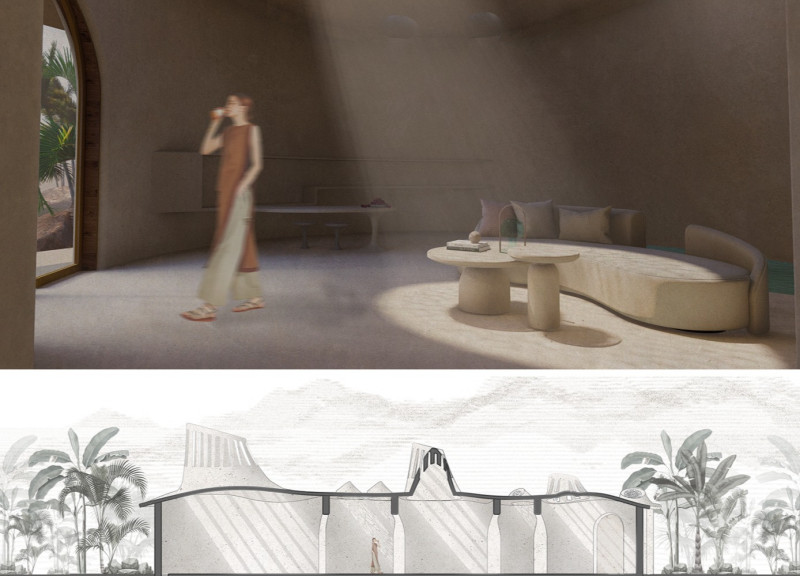5 key facts about this project
At its core, the project serves as a multi-purpose space designed to accommodate various functions, fostering social engagement and collaboration. Whether utilized for community gatherings, educational workshops, or simply as a public space for relaxation, this architecture acts as a catalyst for social interaction. The layout is carefully considered, with designated zones that facilitate both communal activities and private moments, offering flexibility while maintaining a cohesive flow.
One of the most notable aspects of this design is the careful choice of materials that are used throughout the project. The architectural palette includes elements such as sustainably sourced timber, exposed concrete, and large glass panels that not only provide structural integrity but also enhance the building's sustainability. These materials are intentionally selected to reflect the local context and climate, fostering a sense of place while ensuring durability and ease of maintenance. The use of glass allows natural light to flood the interior spaces, creating an uplifting environment that reduces the reliance on artificial lighting during the day.
The design incorporates unique features that enhance its functionality and aesthetic appeal. Soaring ceilings create a sense of openness, while strategically placed windows offer scenic views and a connection to the landscape outside. In addition, the integration of green roofs and vertical gardens demonstrates an innovative approach to urban architecture that prioritizes ecological balance. These features contribute to biodiversity within the urban setting and improve the overall ambiance of the project by introducing aspects of nature within the architectural framework.
Understanding the importance of community and context, the project includes transitional spaces such as courtyards and terraces that invite outdoor activity and create opportunities for informal gatherings. These areas are designed to blur the boundaries between the interior and exterior, encouraging users to engage with their surroundings. From lively outdoor events to peaceful individual reflection, the spaces cater to diverse user experiences, reinforcing the primary intention of the building as a community hub.
The project's architectural design is characterized by clean lines and a minimalist aesthetic that speaks to contemporary practices. The thoughtful arrangement of indoor spaces promotes efficiency and adaptability, allowing for various arrangements depending on the activity. This flexibility is essential in ensuring that the project remains relevant and meets evolving user needs over time.
Overall, this architectural project embodies a commitment to thoughtful design that prioritizes community well-being and environmental stewardship. Its unique approaches to materials, space utilization, and integration with the surrounding landscape highlight the importance of context in architectural practice. As such, this project serves as a model for future designs that seek to balance functionality, aesthetics, and community engagement.
For those interested in exploring the intricacies of this project further, a detailed presentation featuring architectural plans, sections, and design ideas is available for review. Engaging with these materials will provide deeper insights into the architectural philosophy and execution behind this compelling design.























